The Highest Mountains in Iran: Hike & Explore
Iran is home to some of the most breathtaking and challenging mountain ranges in the world, with peaks that reach staggering heights.
The country's diverse and rugged terrain offers a wealth of natural wonders, including the highest mountains in the region. These towering peaks have long been a source of fascination and inspiration for adventurers and mountaineers, drawing them to Iran's remote and awe-inspiring landscapes.
Read on to discover the highest mountains in Iran and their significance in shaping the country's geography and culture.
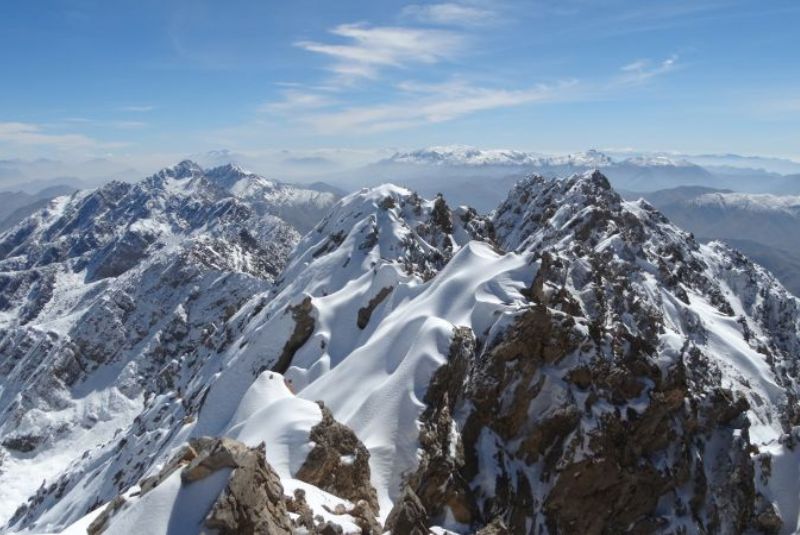
List of the Highest Mountains in Iran
- Damavand - 5,671 meters (18,606 feet)
- Sabalan - 4,811 meters (15,784 feet)
- Alam Kuh - 4,848 meters (15,906 feet)
- Zard Kuh - 4,548 meters (14,921 feet)
- Dena - 4,409 meters (14,465 feet)
- Taftan - 3,941 meters (12,930 feet)
- Bazman - 3,485 meters (11,434 feet)
Damavand
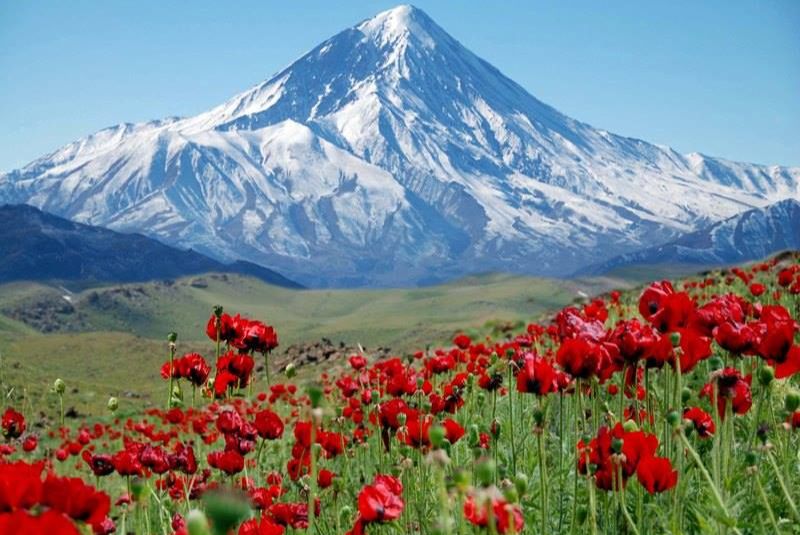
Mount Damavand, towering at approximately 5,671 meters (18,606 feet), stands proudly as the highest peak in Iran and the highest volcano in Asia. This majestic stratovolcano is situated in the Alborz mountain range, northeast of Tehran, and is an iconic symbol deeply rooted in Persian culture and history. Its snow-capped peak is visible from afar, serving as a significant landmark in Iranian literature, art, and folklore.
Damavand holds a special place in Iranian mythology and folklore, often depicted as a symbol of strength, resilience, and national pride. It's mentioned in ancient Persian texts such as the Shahnameh, an epic poem by Ferdowsi, and is associated with mythical stories and heroes. The mountain is believed to possess mystical qualities and is revered in Persian literature as a symbol of resistance against tyranny.
Apart from its cultural significance, Damavand is a popular destination for climbers and adventurers worldwide. The mountain offers various routes catering to different climbing skill levels, attracting mountaineers seeking to conquer its challenging slopes. The ascent typically takes climbers through diverse landscapes, from lush greenery at lower elevations to barren volcanic terrain higher up.
The surrounding region showcases stunning natural beauty, with hot springs, meadows adorned with wildflowers, and diverse flora and fauna. Additionally, the nearby villages and towns reflect the local culture and hospitality, offering a glimpse into the traditional lifestyle of the people living in the shadow of this towering peak.
Given its geological importance as the highest mountain in Iran and an active volcano, Damavand is closely monitored by scientists. While it hasn't erupted in recorded history, its potential activity adds to the attraction of this awe-inspiring natural wonder.
| Discover: Iran's Nature
Sabalan
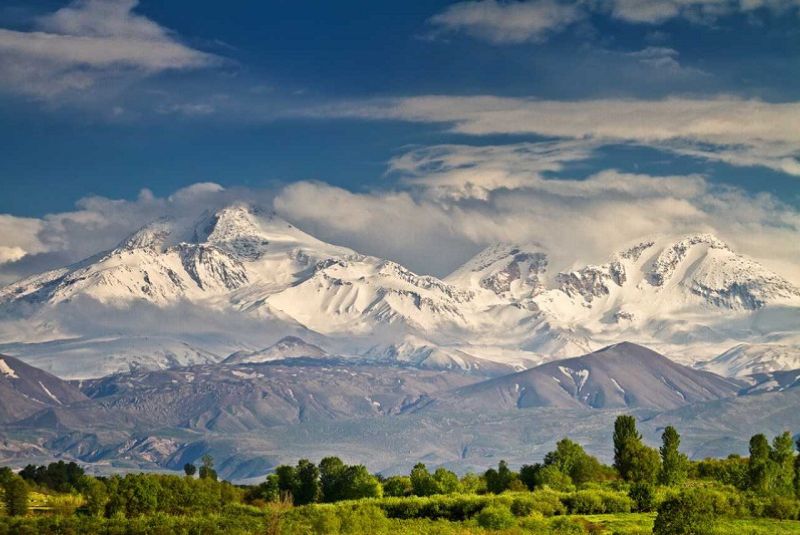
Reaching an elevation of about 4,811 meters (15,784 feet), Mount Sabalan is a prominent stratovolcano located in northwestern Iran, near the city of Ardabil. This potentially active volcano stands as one of the most picturesque and geologically significant peaks in the region.
Culturally, Sabalan holds significance in local folklore and traditions. Its name is believed to derive from the Persian word "savalan," meaning "water and patience." Legends and stories surrounding the mountain are deeply ingrained in the folklore of the indigenous people of Azerbaijan province. The crater lake atop the mountain, known as "Gol-e-Gavmish," is considered sacred and believed to have healing properties. Pilgrims and visitors often trek to this lake seeking its reputed therapeutic benefits.
Sabalan's diverse landscape offers a rich tapestry of natural beauty. The mountain features several distinct ecological zones, including lush forests, alpine meadows, and rugged volcanic terrain. During spring and summer, the slopes are adorned with colorful wildflowers, adding to the mountain's allure.
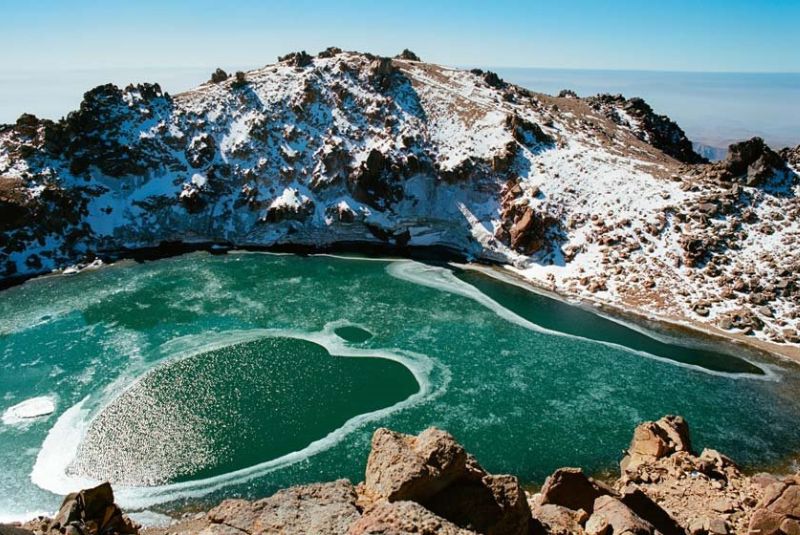
For adventurers and mountaineers, Sabalan offers various trekking and climbing routes, catering to different skill levels. The most popular route to the summit begins from the Shabil Hot Springs, taking climbers through breathtaking scenery and diverse ecosystems.
Sabalan's volcanic history has shaped the surrounding landscape, contributing to the fertile valleys and hot springs in the region. The mountain's potential volcanic activity is closely monitored by scientists, adding an element of intrigue and study for geologists and researchers.
Moreover, the mountain's location near Ardabil, a city known for its historical significance, adds cultural richness to the overall experience. Ardabil boasts attractions like the UNESCO-listed Sheikh Safi al-din Khanegah and Shrine Ensemble, further enriching the visit to Sabalan.
| Read more: Iran's Most Wild and Beautiful Places According to the National Geographic
Alam Kuh
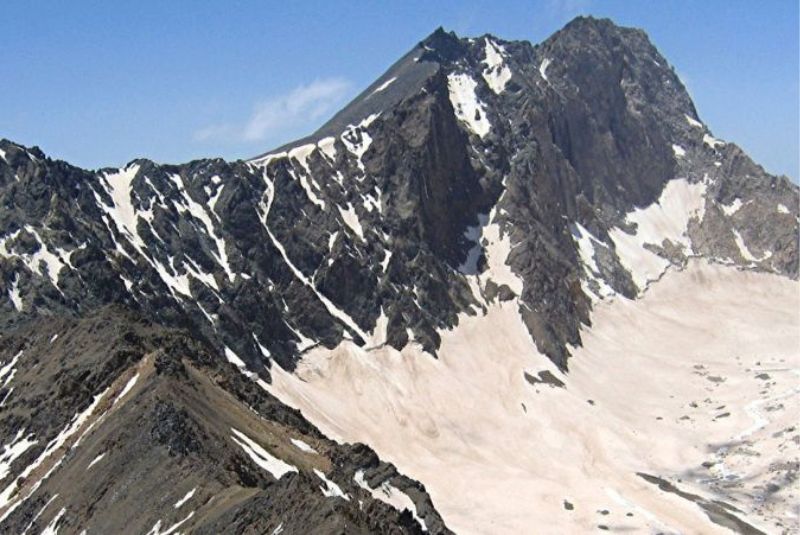
Within the Alborz mountain range of northern Iran, Alam Kuh stands as a formidable peak, soaring proudly to an elevation of approximately 4,848 meters (15,906 feet). This mountain, affectionately known as the "Flag Mountain" due to its distinct rocky pinnacle resembling a flag, holds a special place in the hearts of Iranians.
Unlike the gentle slopes of some neighboring peaks, Alam Kuh presents an audacious challenge to mountaineers and climbers. Its steep and rocky faces, coupled with the capricious nature of the weather, offer an intense and technically demanding ascent. Adventurers drawn to this peak seek the thrill and prestige that come with conquering its challenging north face, notably referred to as the "German Flank."
Alam Kuh embodies a sense of national pride and admiration in Iranian culture. Its name reverberates with the echoes of Persian literature and folklore, immortalized in classical poetry, where its majestic presence symbolizes resilience and strength.
Beyond its cultural significance, the landscape surrounding Alam Kuh unfolds like a masterpiece. From verdant valleys teeming with life to the icy glaciers adorning its higher reaches, the mountain boasts a diverse tapestry of natural wonders. The journey upwards unveils a breathtaking transition from lush greenery to snow-capped peaks, providing a visual symphony that captivates the senses of hikers and photographers alike.
Situated within the Takht-e Soleyman Massif, Alam Kuh's location makes it a prominent attraction for those seeking adventure near Tehran. Its accessibility, coupled with the challenge it presents, invites climbers and nature enthusiasts to test their mettle against its rocky cliffs and steep ascents.
| Learn about: Iran's Four Seasons
Zard Kuh
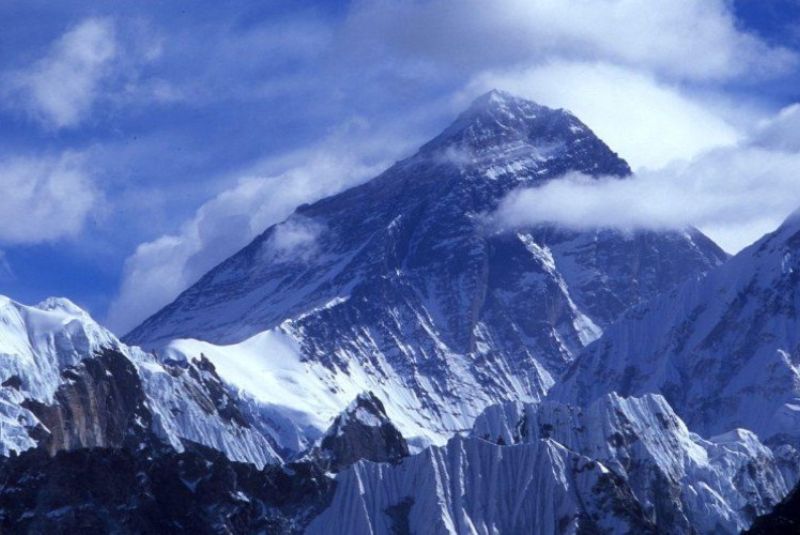
Rising proudly in the southwestern expanse of Iran's Zagros mountain range, Zard Kuh stands as a testament to nature's grandeur, reaching approximately 4,548 meters (14,921 feet) in elevation. This majestic peak, known as the "Yellow Mountain," derives its name from the golden hues that adorn its slopes under the sunlight, adding a touch of ethereal beauty to its rugged terrain.
Zard Kuh might not boast the same towering altitude as some of Iran's highest peaks, but its significance lies in the captivating landscapes it offers. Its rocky slopes, snow-capped peaks, and verdant valleys create a mosaic of natural wonders, each telling a story of resilience and breathtaking beauty.
Zard Kuh weaves itself into the fabric of the Zagros region's heritage. While not as prominently featured in folklore or literature as some other mountains, its imposing presence serves as a backdrop to local narratives and traditions, symbolizing strength and enduring beauty.
This mountain's beauty doesn't lie solely in its height or climbing challenges but rather in the tranquil serenity it provides to nature enthusiasts. The trails around Zard Kuh beckon travelers seeking quiet exploration amidst its scenic vistas, offering a chance to connect with the unique ecosystem of the Zagros.
As one the tallest mountains in Iran, Zard Kuh's location offers a glimpse into the distinctive culture and lifestyle of the southwestern part of Iran. The nearby villages and their cultural heritage, coupled with the mountain's natural splendor, create an immersive experience for visitors.
| Suggestion: Valley of Stars
Dena
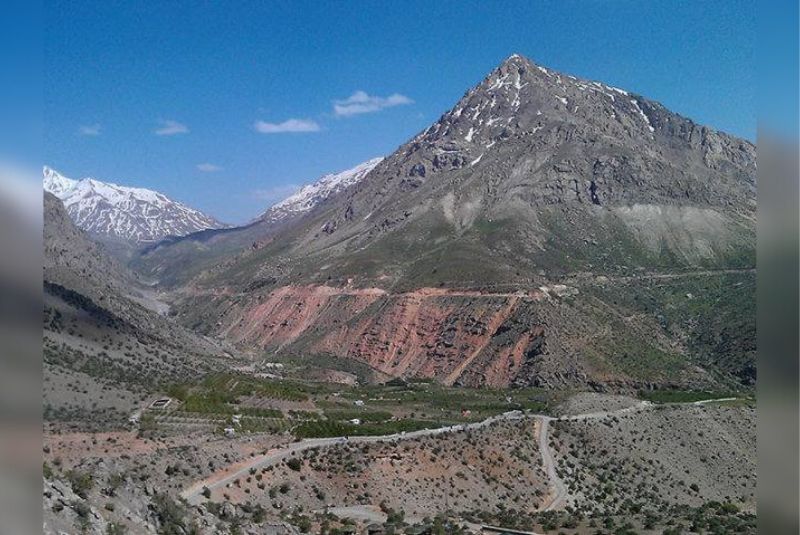
Mount Dena stands as a notable peak of Iran's southwestern Zagros mountain range, rising to approximately 4,409 meters (14,465 feet). While it doesn't claim the tallest height among Iran's peaks, Mount Dena boasts a distinct charm defined by its serene landscapes, cultural significance, and the tranquility it offers to adventurers seeking a different mountain experience.
The terrain surrounding Mount Dena presents a diverse panorama of natural beauty, from verdant valleys adorned with a myriad of flora to rugged slopes that ascend toward snow-capped summits. This ecological variety sustains a rich biodiversity, attracting nature enthusiasts and researchers captivated by the region's unique flora and fauna.
Mount Dena's trails beckon those seeking solace amidst breathtaking vistas. These paths wind through the mountains, promising trekkers an opportunity to discover moments of quiet reflection and connection with the untamed beauty of the landscape.
The mountain's formation and unique features intrigue scientists and geologists eager to unravel the mysteries of the Zagros range. Its placement within this geological marvel offers a lens into the complex history and structure of this region.
Located in southwestern Iran, Mount Dena also serves as a portal to the cultural richness of the surrounding areas. Nearby settlements provide a glimpse into the traditional lifestyle and warm hospitality of the local communities, complementing the allure of exploring this captivating mountainous region.
| Read more: Iran's Wildlife | A Nature Lover's Guide + Pics
Taftan
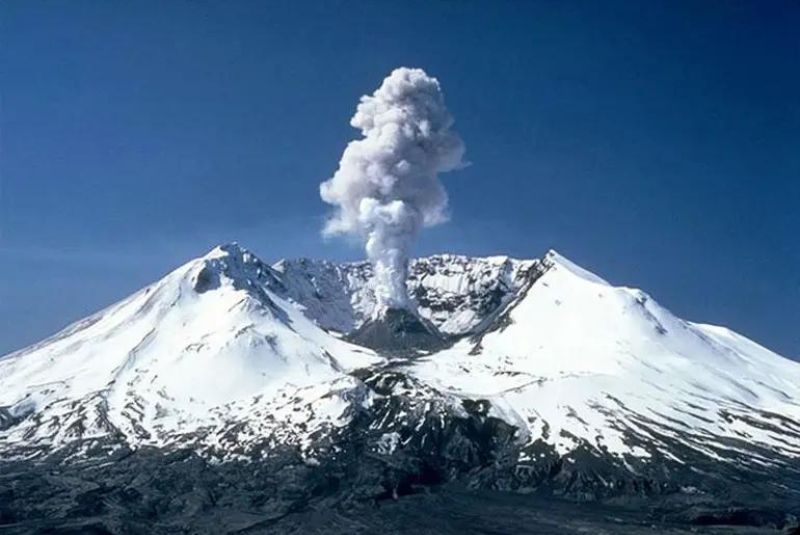
Mount Taftan, a striking stratovolcano in southeastern Iran, stands at an elevation of approximately 3,941 meters (12,930 feet), distinguished by its volcanic nature and unique geological attributes.
Taftan captivates with its stratovolcanic structure, characterized by steep slopes formed from layers of volcanic materials. Its significance lies not only in its elevation but in its volcanic composition, drawing the attention of geologists intrigued by the region's volcanic history and potential activity.
The landscape surrounding Taftan portrays a mesmerizing blend of stark volcanic terrain and occasional pockets of vegetation, creating a dramatic contrast against the horizon. Its remote location attracts adventurers seeking unconventional journeys and the charm of exploring less-traveled landscapes.
| Also read: Ali-Sadr Cave | Largest Water Cave in the World
Bazman
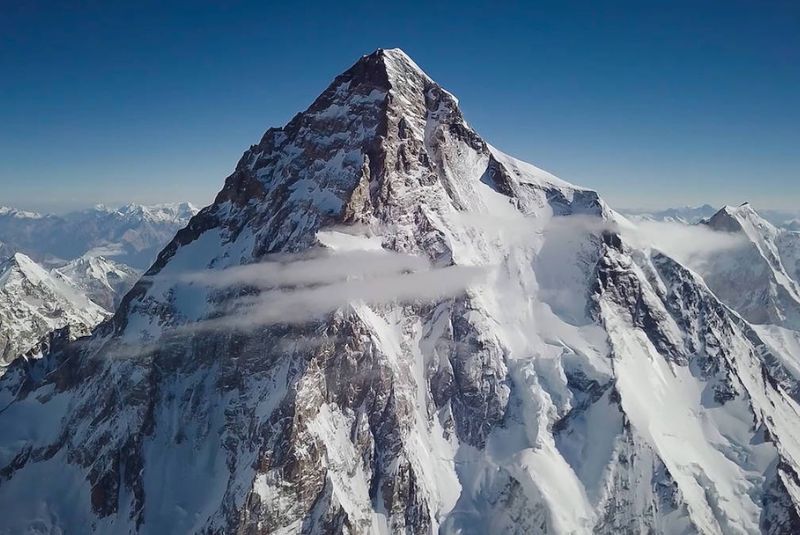
The last place of our list on highest mountains of Iran belongs to Mount Bazman in Sistan and Baluchestan province, rising to approximately 3,485 meters (11,434 feet).
Within local traditions, Mount Bazman holds cultural significance, though it isn't as prominently featured in national folklore. Its presence in the Sistan and Baluchestan region enriches the historical and cultural tapestry of the nearby communities.
Bazman is famed for its rugged yet captivating landscape, blending rocky slopes with occasional vegetation thriving in the mountain's foothills. While it may not match the towering heights of some of Iran's other peaks, its distinctive scenery appeals to adventurers seeking unconventional destinations.
The remote location of Mount Bazman adds an element of mystery and magnetism, attracting explorers eager to uncover uncharted paths and pristine views. Its relatively lesser-known status among Iran's peaks offers an untouched tranquility to those who explore its slopes.
Bazman's geological features could captivate scientists and researchers studying the region's diverse geological formations, contributing to our comprehension of the area's geological history and landscape development.
| Learn more: Caspian Hyrcanian Forests in Iran
The Final Takeaway
Looking for an incredible adventure? The highest mountains in Iran are like nature's best-kept secrets! From the towering Mount Damavand to the mystical vibes of Mount Sabalan, these peaks have stories to share. Hike through their awesome landscapes, hear ancient tales, and soak up the vibe of these amazing summits.
Pack your curiosity and explore Iran's natural wonders.
Share your story!
Comment below and let us know about your Experience.
Your story inspires others!


Comment
Leave a Comment